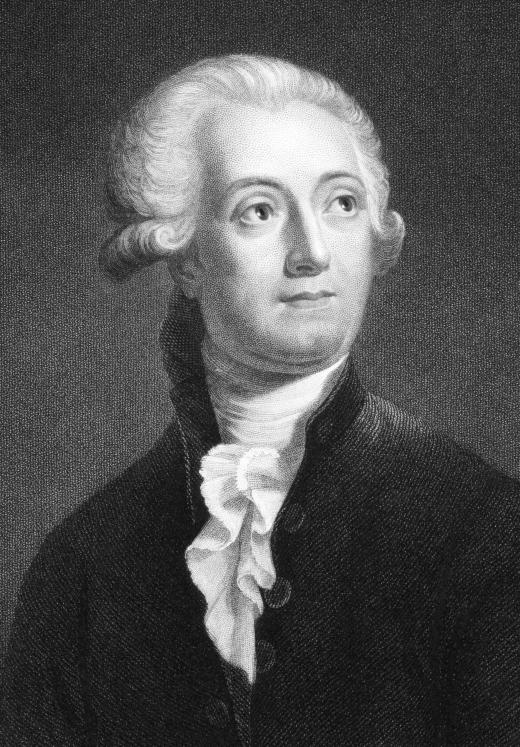What Is the Law of Conservation of Matter?
The law of conservation of matter, also known as the conservation of mass, states that the amount of matter in a closed system never changes. This appears on the surface to be wrong when someone looks at the simple issue of what happens to matter when burned on Earth. It would seem that the matter was destroyed to some degree in the process, and this was believed to be the case until the 18th century. If Earth were an entirely sealed system, the heat, light, sound energy, and escaping gasses generated in the burning process would still be detectable. Matter, therefore, can change form in a closed system, as can energy, but it can never be created or destroyed.
In the 1700s, French chemist Antoine-Laurent Lavoisier began to clearly define the principle of the law of conservation of matter, though the actual idea can be traced back to an ancient Greek belief that nothing can come from nothing. Lavoisier performed experiments where he created reactions in completely sealed chambers, a novel idea at the time. In his experiments, he measured the weight of all of the byproducts of a reaction afterwards and determined that it had not changed. He is credited with the discovery and naming of oxygen as a byproduct of burning materials, which led him to an understanding of the conservation law of matter. His research earned him the title as the Father of Modern Chemistry.

It wasn't until over a century later that Albert Einstein discovered that matter and energy are interchangeable. Einstein proved that the law of conservation of matter and energy were just two ways of looking at the same process. Chemistry now has established methods for calculating the molecular weight of substances, so that it is clear that when compounds are combined or separated, matter has not been lost or destroyed.

Unfortunately, though Lavoisier pioneered research into the conservation of mass, he was never able to complete his experiments. As a member of an unpopular French group of tax collectors known as Ferme Generale, he exploited his position to make a fortune, and was sentenced to death during the French Reign of Terror. He requested a 15-day extension on his execution to complete his scientific experiments, which he thought would be valuable to posterity. The judge in the case replied, however, that, “...the Republic has no need of scientists,” and he was guillotined on 8 May 1794.
AS FEATURED ON:
AS FEATURED ON:













Discussion Comments
@jmc88: He did it by melting ice into water, water to gas, gas to water, and it weighed less, but when the gas turned into water again, it gained the same weight as the weight of water lost. He was also obsessed with accuracy and had a lot of money making and/or buying the most sensitive instruments.
The mere fact that the universe is in constant motion and activity demonstrates that the total amount of mass or the total amount of energy are constantly changing in the universe.
The only circumstance where mass and energy wouldn't be constantly changing would be a universe with no motion or activity. What is constant is the sum total of mass and energy. The motion and activity of the universe is a demonstration of the universe balancing itself. Mass and energy are interchangeable; we just don't have the tools yet.
No matter how much mass we change into energy, the universe will balance it for us. Sounds exciting doesn't it. Happy trails.
Overall, it's good to question the foundations that current scientific understanding is built upon. Lavoisier did this in his day by doubting the premise most had accepted that matter is destroyed when it is consumed in a fire.
The French state at the time didn't think such inquiry was all that important. Today, we have widespread science, but it's still based to some degree on dogma, so every time someone questions a basic premise, it can lead to new insights.
I'm glad this article has received so much discussion (I'm the author by the way).
Like a lot of scientific principles or laws, I think the law of definite proportions is probably much more true at the macroscopic every day scale than it is when we try to truly understand the nature of materials at the atomic scale, what with Heisenberg's principle and quantum effects coming into play.
Possible exceptions to the consistency of matter with the law of definite proportions would be with ionized matter and isotopes (where you have variations in charge states and combinations of subatomic particles - differences in the number of neutrons present).
An example would be plasma, which has a balanced charge state, but which is not natural for many compounds that normally carry a charge.
Seawater would be another good example of an exception to the rule. Where you largely have H20 there, it varies on its permittivity based on minerals present, which can affect levels of deuterium or tritium. (See "What is permittivity?")
Generally I agree that what you are saying is correct. But chemistry and physics have a way of altering basic order for substances that ruins what we think of as a reliable chemical formula.
@cardsfan27 - I'm not sure if that would always be right, though. I think in the vast majority of occasions it would work. What I'm thinking of specifically is in radioactive decay or in a collision experiment. Maybe there are caveats to the law of definite proportions.
In the case of radioactive decay, there is energy being released in the form of electrons and protons. An atom of uranium slowly loses protons and by definition changes to a new element.
As for the opposite, if you think about experiments like CERN where they are colliding atoms, they end up creating elements with more protons.
Maybe definite proportions refers to certain combinations of molecules always having the same properties. Maybe someone else here will know more.
Could you say that the law of conservation of mass is highly related to the law of definite proportions?
The law of definite proportions says that molecules will always be in the same proportions in a substance. For example, water will always have the same formula if there are the same number of oxygen and hydrogen molecules available.
Wouldn't this law kind of be the same? If a piece of paper always has the same chemical make up, burning it will result in the same atoms in the same proportion?
@jmc88 - I don't know exactly how Lavoisier did it, but I know what I would probably do that should prove there was no destruction of matter.
First, the experiment would have to happen in a vacuum. That would be the closed system. You could burn a piece of paper in the vacuum, and then weigh the whole thing afterwards. If there was no change in weight, it would show that there was no destruction of matter. Instead, the matter was changed into oxygen and other gases that weren't visible in the vacuum tube.
Lavoisier proved the concept by burning materials in a completely sealed chamber then measuring the byproducts afterward, which showed that nothing was lost, only that it had changed form.
No one before him had thought to try this by sealing off the combustion process and capturing all the byproducts (as far as history knows).
Energy levels can be measured in various ways. Calories are measured for instance (basic heat energy) with a variety of different calorie measuring devices that record change in temperature, initial and final mass of a combustion process, and specific heat ratings for various materials.
I remember learning about this in science class, but I didn't know the idea was so recent, considering the history of science. We have only known this for about 200 years. It is pretty neat that oxygen was discovered in this process, too.
My question, though, is how can we measure different levels of energy that come from a reaction? We know that burning of piece of paper doesn't destroy any matter, but how can you prove it? How did Levoisier do it?
Post your comments